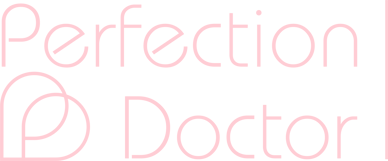Your One Stop Shop to Perfect Looks | info@perfectiondoctor.com | WhatsApp: +1 249 288 0008
Rhinoplasty, commonly referred to as a nose job, is a surgical procedure that reshapes or reconstructs the nose for cosmetic or functional purposes. It can be done to improve appearance, correct breathing issues, or repair damage from injury or birth defects.
Types of Rhinoplasty:
Cosmetic Rhinoplasty – Enhances the nose’s shape, size, symmetry, or proportions.
Functional Rhinoplasty – Improves breathing by correcting structural issues like a deviated septum.
Revision (Secondary) Rhinoplasty – Corrects or improves results from a previous rhinoplasty.
Non-Surgical Rhinoplasty – Uses dermal fillers to reshape the nose temporarily (liquid rhinoplasty).
Common Reasons for Rhinoplasty:
Reducing or reshaping a hump on the bridge.
Refining the tip of the nose.
Narrowing or widening the nostrils.
Straightening a crooked nose.
Improving breathing by correcting structural defects.
Surgical Approaches:
Open Rhinoplasty – A small incision is made under the nose (columella) for more visibility and control.
Closed Rhinoplasty – All incisions are made inside the nostrils, leaving no visible scars.
Recovery:
Swelling & Bruising: Peak swelling occurs in the first 1-2 weeks.
Downtime: Most people return to work within 1-2 weeks, but full healing can take several months.
Septoplasty is a surgical procedure to correct a deviated septum, which is when the cartilage and bone dividing the nostrils (nasal septum) is off-center or crooked, causing breathing difficulties. Unlike rhinoplasty, which focuses on cosmetic changes, septoplasty is primarily functional, improving airflow and nasal function.
Who Needs Septoplasty?
People with chronic nasal congestion or difficulty breathing through one or both nostrils.
Frequent nosebleeds or sinus infections due to poor airflow.
Sleep disturbances like snoring or sleep apnea related to nasal obstruction.
Trauma or injury causing nasal asymmetry or breathing issues.
How is Septoplasty Performed?
Usually done under local or general anesthesia.
The surgeon makes an incision inside the nose (no external scars).
The deviated parts of the septum are repositioned or removed.
The nasal lining is placed back, and sometimes splints or stitches are used to support healing.
Recovery:
Downtime: Most patients resume normal activities within a week.
Swelling & Congestion: Temporary swelling, bruising, and congestion last 1-2 weeks.
No Visible Scars: Since the incisions are inside the nose.
Septoplasty vs. Rhinoplasty
Septoplasty = Functional, corrects breathing issues, no major cosmetic changes.
Rhinoplasty = Cosmetic and/or functional, reshapes the nose.
Septorhinoplasty = A combination of both for improved breathing and aesthetics.
© 2024. All rights reserved. Perfection Doctor | Privacy Policy
Contact Us
General Inquiries:
Video call booking:


